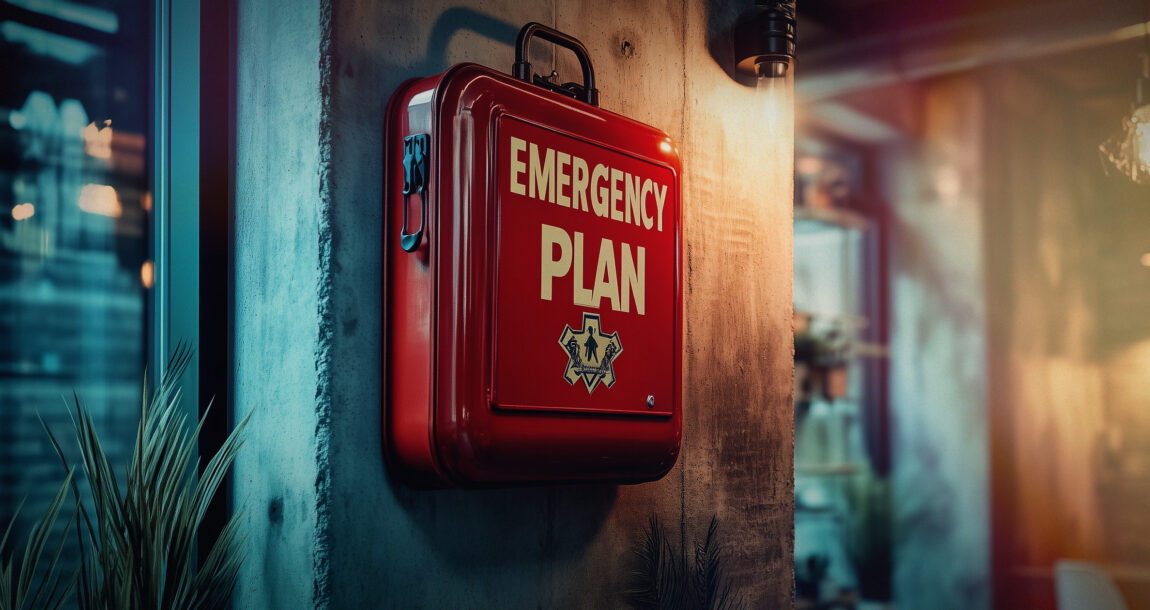Help your business clients create an emergency response plan

An emergency is any unplanned event that can cause deaths or significant injuries to employees, customers or to the public, or significant injuries to employees, customers or the public. An emergency is also any unplanned event that can shut down your business, disrupt operations, cause physical or environmental damage, or threaten the facility’s financial standing or public image.

Emergency management is a preplanned process for preparing for, mitigating, responding to and recovering from an emergency.
To be successful, emergency management requires upper management support. The chief executive sets the tone by authorizing planning to take place and directing management to get involved.
Emergency response procedures
The procedures spell out how the facility will respond to emergencies. Whenever possible, develop them as a series of checklists that can be quickly accessed by management, department heads, response personnel and employees.
Determine what actions would be necessary to:
- Access the facility.
- Protect employees, customers, visitors, equipment, vital records and other assets.
- Get the business back up and running.
Specific procedures might be needed for an active shooter, bomb threats or tornadoes, and for such functions as
- Emergency escape procedures.
- Procedures for employees who perform or shut down critical operations before evacuation.
- Procedures to account for all employees, visitors and contractors after an evacuation is completed.
- Rescue and medical duties for assigned employees.
- Procedures for reporting emergencies.
- Names of people or departments to be contacted for information regarding the plan.
Support documents
Documents that could be needed in an emergency include:
- Emergency call lists of all persons on and off site who would be involved in responding to an emergency, as well as their responsibilities,and their 24-hour telephone numbers.
- Building and site maps that indicate:
- Utility shutoffs.
- Water hydrants.
- Water main valves.
- Water lines.
- Gas main valve.
- Electrical cutoffs.
- Storm drains.
- Sewer lines.
- Location of each building.
- Floor plans.
- Alarm and enunciators.
- Fire extinguishers.
- Fire suppression systems.
- Exits
- Stairways
- Designated escape routes.
- Restricted areas.
- Hazardous materials (including cleaning supplies and chemicals).
- Safety data sheets.
- High-value items.
- Lists of major resources (equipment, supplies, services) that could be needed in an emergency, mutual aid agreements with other companies and government agencies.
Identify challenges and prioritize activities
Determine specific goals and milestones. Make a list of tasks to be performed, by whom and when. Determine how you will address the problem areas and resource shortfalls. Determine the needs of disabled persons and non-English speaking person. The Americans with Disabilities Act defines a disabled person as anyone who has a physical or mental impairment that substantially limits one or more major life actives, such as seeing, hearing, walking, breathing, performing manual tasks, learning, caring for oneself or working.
Write the plan
Assign each member of the planning group section to write. Determine the most appropriate format. for each section.
Establish an aggressive timeline with specific goals. Provide enough time for completion of work, but not so much as to allow assignments to linger.
Establish a training schedule
Have one person or department responsible for developing a training schedule for your facility.
Coordinate with outside organizations
Determine protocols for turning control of a response over to someone outside the organization. Some details that may need to be worked out are:
- Which gate or entrance will be responding units use?
- Where and to whom will they report?
- How will they be identified?
- How will facility personnel communicate with outside responders?
- Who will oversee response activities?
Determine what kind of identification authorities will require to allow your key personnel into your facility during an emergency.
Integrate the plan into company operations
Emergency planning must become part of the corporate culture. Look for opportunities to build awareness; to educate and train personnel; to evaluate procedures; to involve all levels of management, all departments in the planning process; and to make emergency management part of what personnel do on a day-to-day basis.
Evaluate how completely the plan has been integrated by asking:
- How well does management support the responsibilities outlined in the plan?
- Have emergency planning concepts been fully incorporated into the facility’s accounting, personnel, and financial procedure?
- Are there opportunities for distributing emergency preparedness information through corporate newsletters or employee mailings?
- What kinds of safety posters or other valuable reminders would be helpful?
- Do personnel know what they should do in an emergency?
- How can all levels of the organization be involved in evaluating and updating the plan?
© Entire contents copyright 2024 by InsuranceNewsNet.com Inc. All rights reserved. No part of this article may be reprinted without the expressed written consent from InsuranceNewsNet.com.
Jack White is senior director of technical services, Rainbow Restoration, a Neighborly company. Contact him at [email protected].




Attorneys: Chubb ruling could have ‘dangerous’ implications for brokers, policyholders
Consumer misunderstanding may contribute to life insurance coverage gap
Advisor News
- Bill that could expand access to annuities headed to the House
- Private equity, crypto and the risks retirees can’t ignore
- Will Trump accounts lead to a financial boon? Experts differ on impact
- Helping clients up the impact of their charitable giving with a DAF
- 3 tax planning strategies under One Big Beautiful Bill
More Advisor NewsAnnuity News
- An Application for the Trademark “EMPOWER INVESTMENTS” Has Been Filed by Great-West Life & Annuity Insurance Company: Great-West Life & Annuity Insurance Company
- Bill that could expand access to annuities headed to the House
- LTC annuities and minimizing opportunity cost
- Venerable Announces Head of Flow Reinsurance
- 3 tax planning strategies under One Big Beautiful Bill
More Annuity NewsHealth/Employee Benefits News
Life Insurance News
- On the Move: Dec. 4, 2025
- Judge approves PHL Variable plan; could reduce benefits by up to $4.1B
- Seritage Growth Properties Makes $20 Million Loan Prepayment
- AM Best Revises Outlooks to Negative for Kansas City Life Insurance Company; Downgrades Credit Ratings of Grange Life Insurance Company; Revises Issuer Credit Rating Outlook to Negative for Old American Insurance Company
- AM Best Affirms Credit Ratings of Bao Minh Insurance Corporation
More Life Insurance News